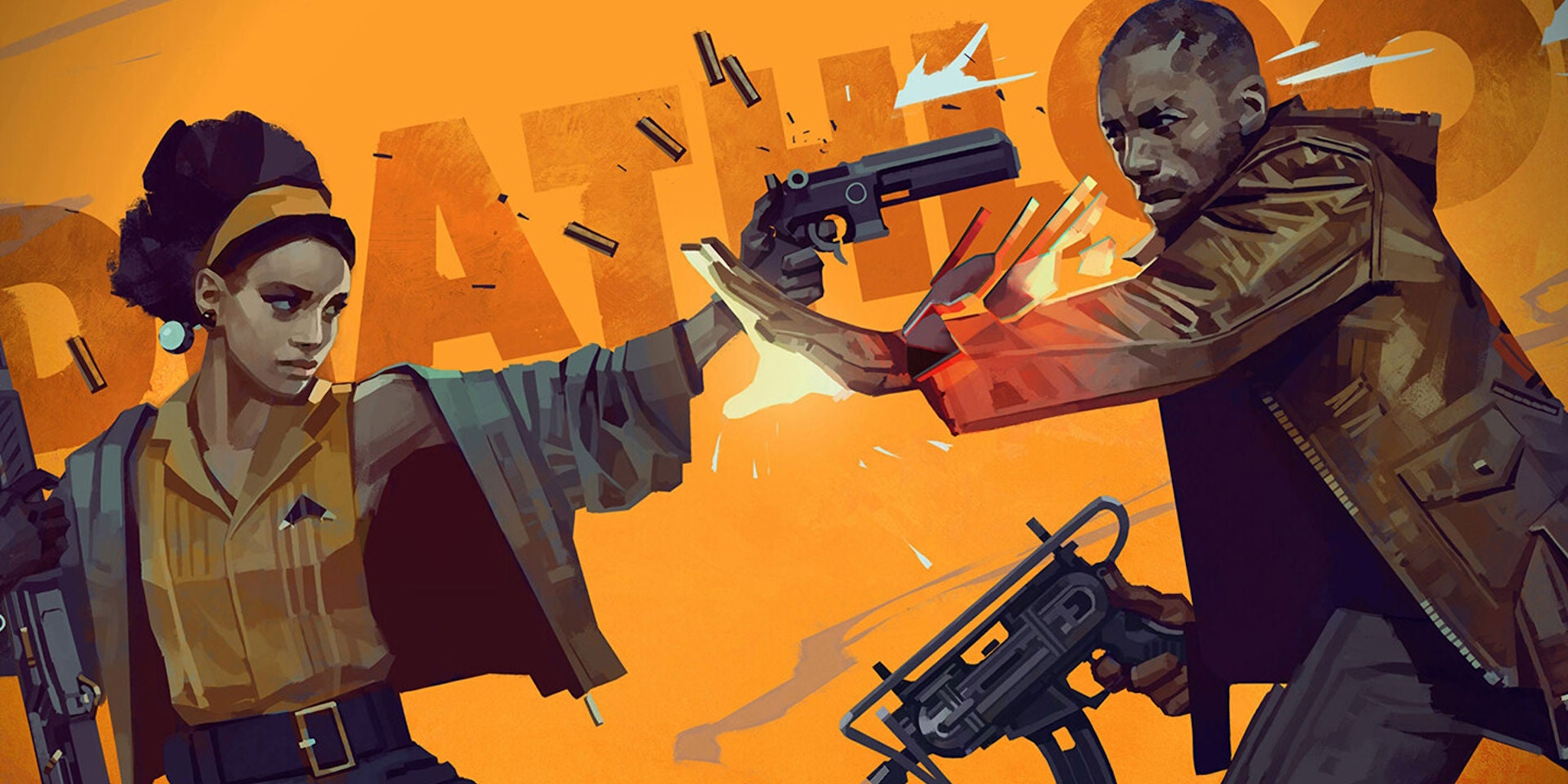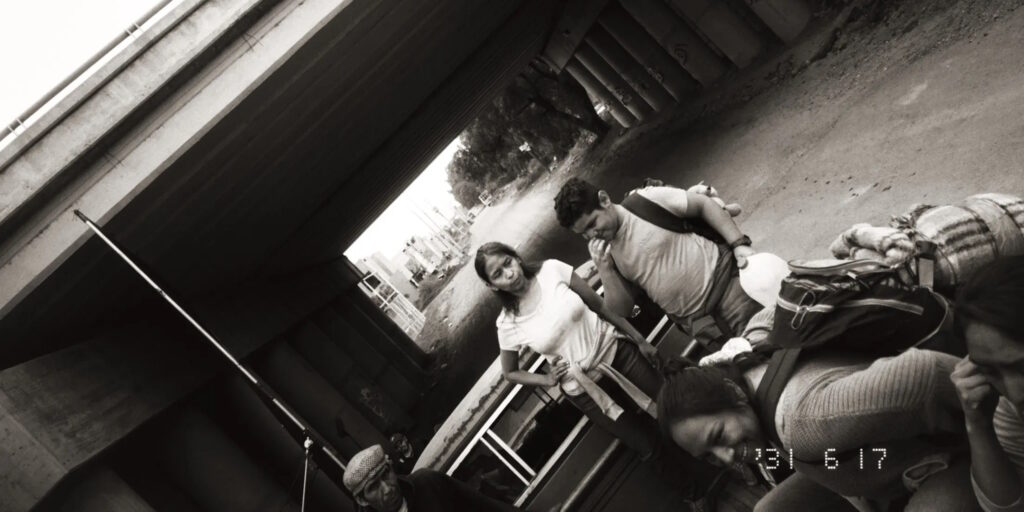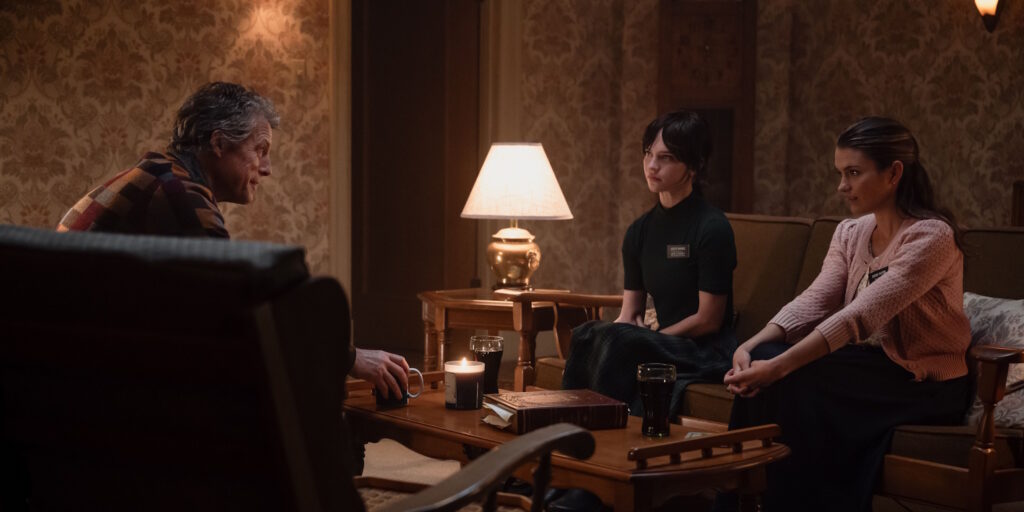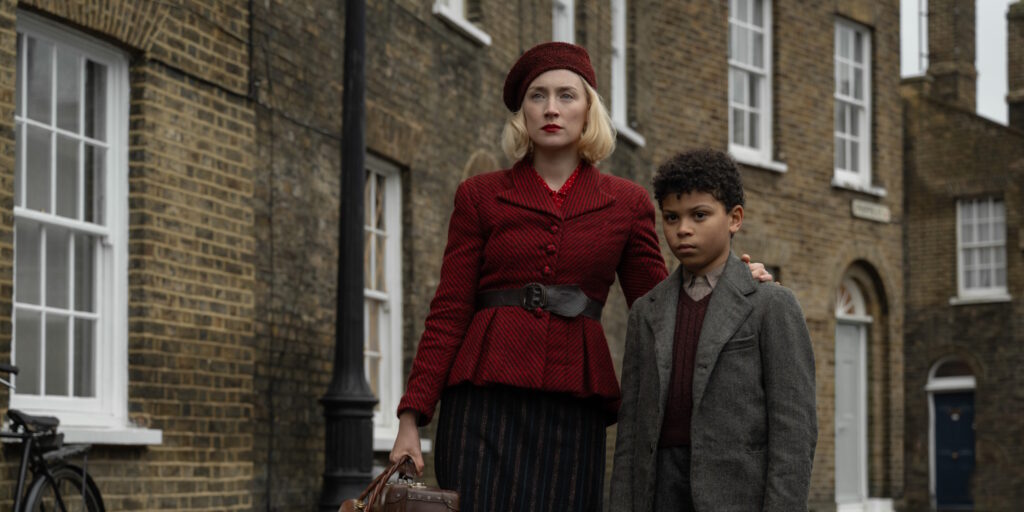[Note: This article was originally published at Cinema St. Louis’ The Lens.]
One of the common criticisms that is often leveled against contemporary AAA video games is that they’re overstuffed with… stuff. One might term this the Ubisoft Problem, although the condition afflicts titles released by many prestige game studios. It is not enough that Assassin’s Creed: Valhalla allows you to stealthily eliminate Anglo-Saxon evildoers in a mind-blowingly meticulous recreation of 8th-century England. Motivated, perhaps, by a belief that gamers must quote-unquote feel like they’re getting their money’s worth, Valhalla publisher Ubisoft also crammed the game with a seemingly limitless laundry list of Stuff: side quests to complete, monasteries to raid, legendary beasts to slay, curses to break, mysteries to solve, and what seems like about 500 treasure chests to locate and open. There are weapons, armor, mounts, ships, and tattoos to unlock. There’s even a rock-stacking minigame.
This epidemic of Stuff – combined with vast open world settings and over-long, meandering storylines – contributes to an exhausting sense of bloat in many AAA prestige video games. This is hardly an original observation for a critic to make, of course. It’s also worth pointing out that this doesn’t necessarily mean that such games are bad. (This writer, for one, still spent 200+ hours in the world of Valhalla, because everything else aside, it remains a spectacular, pseudo-historical simulation of Dark Ages England, which is extremely my jam.) The proliferation of Stuff is starting to feel like a problem, however, one that big game studios are struggling to overcome, given that packing their games with these checklists of bric-a-brac seems to result in ungodly piles of money.
Occasionally, however, a AAA title comes along that throws into stark relief just how needlessly distended many of its contemporaries have become. Nintendo’s Super Mario Galaxy 2 (2010) was one such game. Naughty Dog’s The Last of Us (2013) was another. Ditto Crystal Dynamics’ Rise of the Tomb Raider (2015). Arkane Studios’ inventive puzzle-box shooter Deathloop is the latest title to illustrate that game developers can achieve amazing things when they focus on doing a handful of things very, very well. If Assassin’s Creed has become one of those novelty bloody marys stuffed with a T.G.I. Friday’s worth of ridiculous garnishes, then Deathloop is a perfectly shaken whiskey sour.
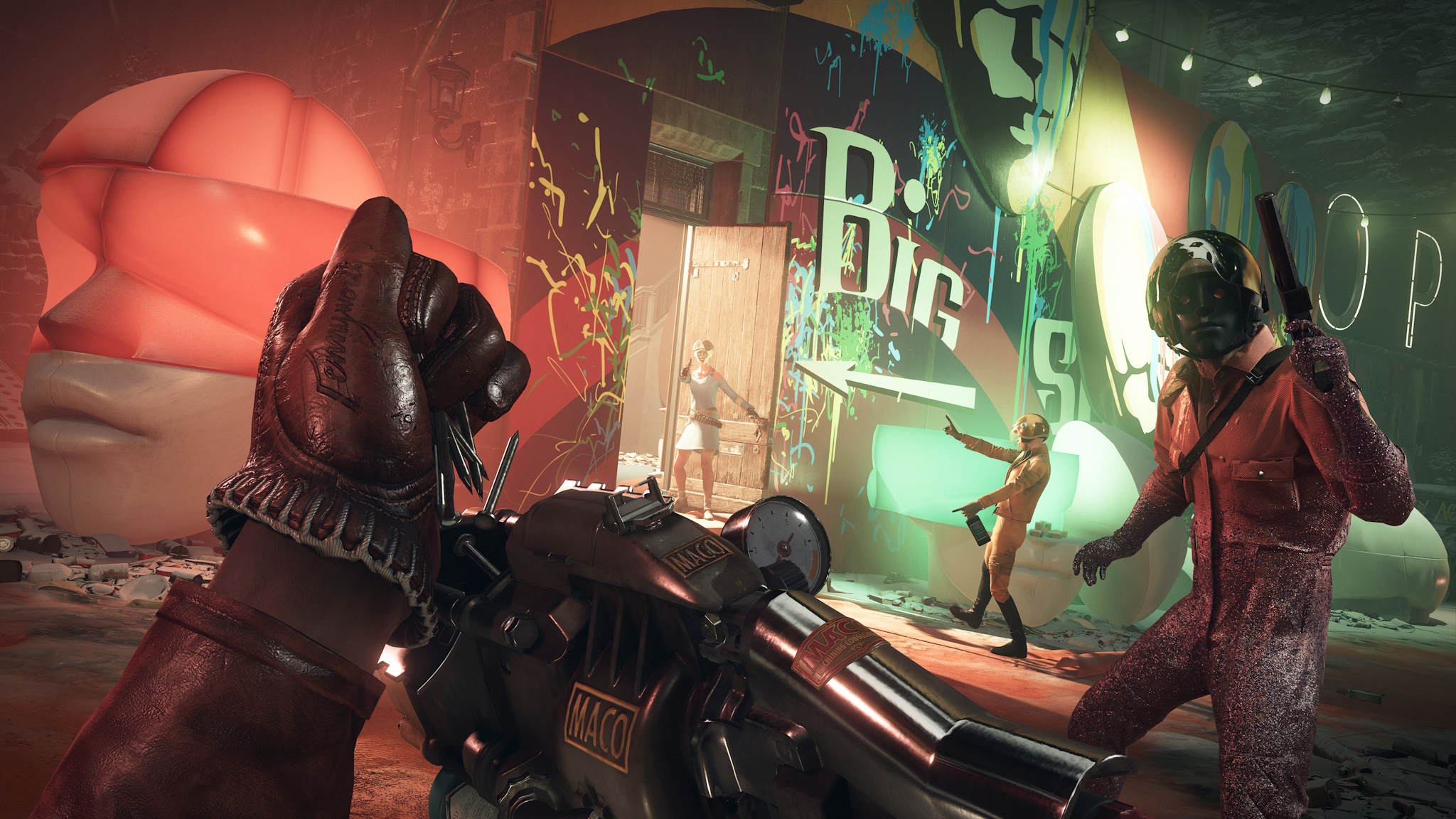
The elevator-pitch premise of Deathloop is admittedly arresting. The player controls Colt Vahn, a foul-mouthed ex-military type who awakens on a beach on the mysterious subarctic island of Blackreef. Colt remembers almost nothing about his past up to this point, but his extraordinary circumstances quickly become apparent. He is living the same day over and over, thanks to the unique timey-wimey properties of Blackreef. This extraordinary island has been hijacked, so to speak, by eight aggressively unpleasant megalomaniacs called the Visionaries, who have used
bleeding-edge experimental physics to turn Blackreef into their eternal, self-aggrandizing playground. In short order, Colt determines that the only way to “break the loop” and escape this
purgatory is to kill all eight Visionaries before the day ends. This is not an easy task, given that each of these supervillains is surrounded by loyal goons and sophisticated security systems –
and, what’s more, each has a habit of quietly changing locations throughout the day. (It’s worth noting that, apparently by pure coincidence, Deathloop has some superficial resemblances to
Housemarque’s Returnal, released just five months earlier.)
Fortunately, Colt possesses a handful of key advantages compared to his targets. Unlike most of the denizens of Blackreef, he remembers previous iterations every time the loop resets, whether at the end of the day or due to his ignominious death. Near the conclusion of the story’s tutorial-ish first act, Colt also gains the ability to infuse weapons, trinkets, and quasi-magical “slabs” with a kind of extra-dimensional phlebotinum, which causes those objects to reappear in his possession each morning. There’sone wrinkle, however: Colt is being hunted by Julianna, the only Visionary who also retains her memories across loops. Quickwitted, sarcastic, and bloodthirsty, Julianna emerges as Colt’s implacable nemesis, one who has taken pleasure in murdering him in every conceivable way over an untold number of days. (Or has it been months? Years? Lifetimes?) She can’t resist mocking Colt through his handheld, all-in-one radio, doling out morsels of halftruthy backstory, seemingly just to mess with his head. On the PlayStation 5 version of the game, Julianna’s belittling asides even squawk out of the controller’s built-in speaker – one of those nextgen sensory flourishes that the PS5 does so well.
On its slick, retro-futuristic surface, Deathloop resembles many other first-person shooters (FPSs) that have been released in the past couple of years. You blast your way through hordes of masked minions called Eternalists, relying on a small arsenal of firearms and an occasional swing from your trusty machete. You can choose to approach your objectives stealthily, sniping isolated targets from the rooftops or hacking into automated gun turrets to turn them on enemies. You can also play Deathloop as a run-andgun action game, although this tends to carry greater risks: The Eternalists are smarter and more tenacious than most FPS cannon fodder, and they have a nasty habit of sticking together in large groups. The game’s levels are scattered with ammo and health pickups, as well as various personal and weapon trinkets that can be equipped to give you an edge. It’s broadly familiar stuff.
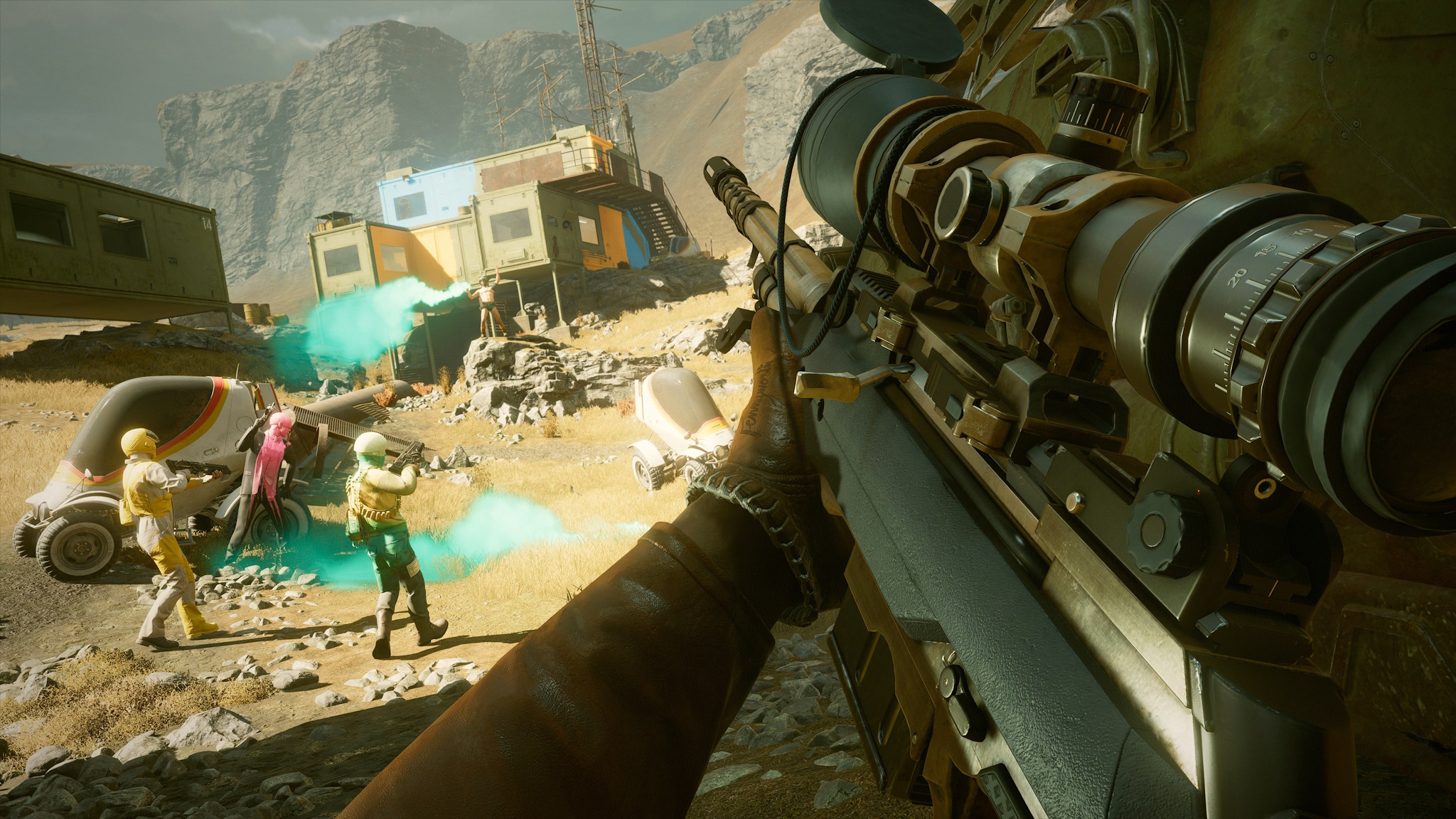
User interfaces can be deceiving, however: Deathloop is as much an old-school adventure game as it is a guns-blazing combat simulation. Indeed, there is more Day of the Tentacle (1993) and
The Legend of Zelda: Majora’s Mask (2000) in the game’s DNA than there is Call of Duty. Video game critics love to talk about the “gameplay loop”, the fundamental modes of play that cohere to
create a particular game’s distinct rhythms. Deathloop rather ingeniously literalizes this concept and transforms it into an elaborate four-dimensional puzzle. You don’t repeat the loop to grind your stats or gear, but to learn, gathering intelligence on the Visionaries’ activities and movements over the course of the day. (Okay, there is some gear grinding, but it’s modest and mostly optional.) Every trip through the loop provides a new nugget of information – either an in-game clue for you to follow, or simply a hard-knocks lesson about, say, the paths to avoid when navigating a labyrinthine military junkyard. Those proximity mines hurt.
Over the course of Colt’s mission, you inevitably end up backtracking and revising your plan to execute the perfect, Visionary-exterminating day. For example, one Visionary can theoretically be eliminated at noon, assuming you can fight your way through a lethal, funhouse-like stronghold packed with a truly absurd number of enemies. However, you need to sabotage a piece of scientific equipment elsewhere at noon, to ensure that another Visionary is present at a particular location in the evening. The first target, it seems, must be eliminated through other, more convoluted means. Gradually, the outline of the perfect day starts to take shape. Deathloop has an established path that the player is expected to take through its main story, and the game helpfully points the way each step of the way. (In a welcome touch, however, these objective markers can be turned off for players who want a less guided, more challenging experience.)
Deathloop is set in a kind of sci-fi, alternate-history version of the 1960s. In-game lore hints that it takes place in roughly 1963, but the game’s art direction is a pastiche of vintage styles plucked
from the 1940s through the 1980s. Following the Bioshock model, Deathloop’s artists seem to have been less concerned with historical accuracy than with creating an eccentric, distinctive atmosphere that feels vaguely familiar but also fantastical. It’s as if someone slathered a dieselpunk shooter in a layer of Swinging London, creating a kitschy gestalt world where clunky, Soviet-looking machinery coexists with chic mod furnishings. This aesthetic even extends to the game’s menus, which use striking retro colors and typefaces to create an instantly indelible look. Not coincidentally, the Visionaries all embody recognizable mid-century archetypes: mad scientist, cult leader, entitled playboy, space-cadet artiste, rock star hedonist, and so on. They talk like characters in a Quentin Tarantino feature, but any one of them could be a minor Bond villain circa You Only Live Twice (1967). (They are also, to a man and woman, deliciously insufferable jackasses of the highest order, which is one reason taking them down feels so satisfying.)
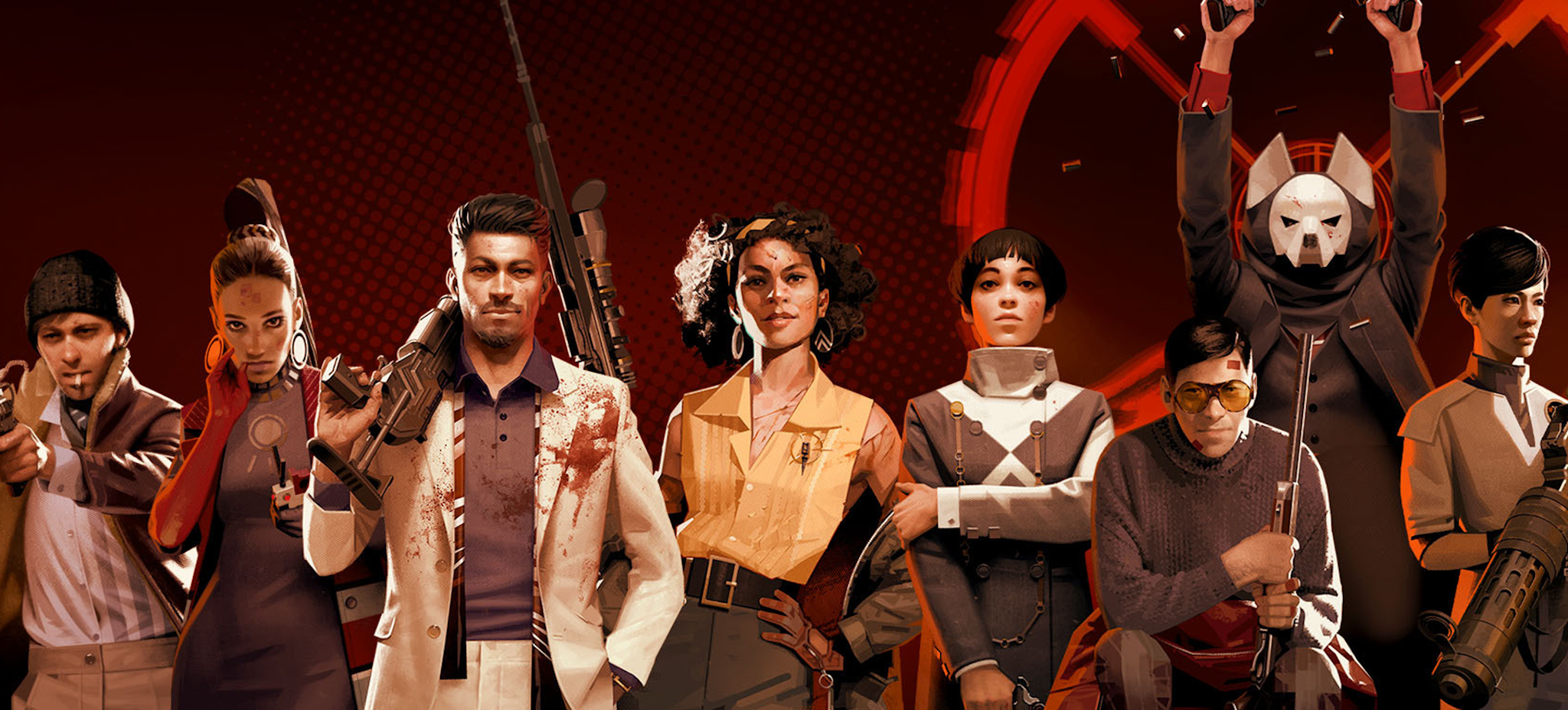
All of this makes for a stylish, memorable game that expertly blends elements of the first-person shooter, rouge-like dungeon crawler, graphic adventure, and puzzle/detective game. It’s undeniably fun and unique, but what makes Deathloop particularly impressive is its audaciously modest scale – and how precisely it has been engineered to operate on that scale. Blackreef is divided into four large, geometrically complex levels, but each one is a relatively contained environment. Before long, each of these zones will become familiar territory for the player. Indeed, to play Deathloop well is to commit to memory every cranny of the layout and every movement of the enemies in these four distinct areas during four different phases: morning, noon, afternoon, and evening. This is admittedly challenging, but not unreasonably so for an astute and patient player. Indeed, Deathloop is so welld-esigned that it has no difficulty setting. It does, however, incorporate some hidden scaling mechanics. Eliminating Visionaries puts “pressure” on the loop for the remainder of the
day, making the Eternalists you encounter tougher and more alert – and increasing the frequency with which Julianna actively hunts you. Of course, everything resets in the morning, and the goons
revert to their weaker, more oblivious selves.
Although the two games are wildly different in terms of tone, the approach that Arkane employs for Deathloop’s gameplay systems suggests a studio that has carefully studied The Last of Us’s
famously lean-and-mean design. Ammunition is relatively scarce in Deathloop, and although you eventually have access to grenades, you can only carry four of them. Over time, you will build a
substantial collection of infused weapons, trinkets, and slabs, but, critically, your access to them is always limited. During each trip into one of Blackreef’s areas, you can bring just four personal
trinkets, three guns, and two slabs. Every foray thus requires the player to make considered choices, and canny loopers will develop different loadouts that help them overcome the distinct challenges presented by each area during each phase of the day. This ensures that the game never feels overwhelming: Success always depends on just a handful of tools, deployed intelligently and
creatively.
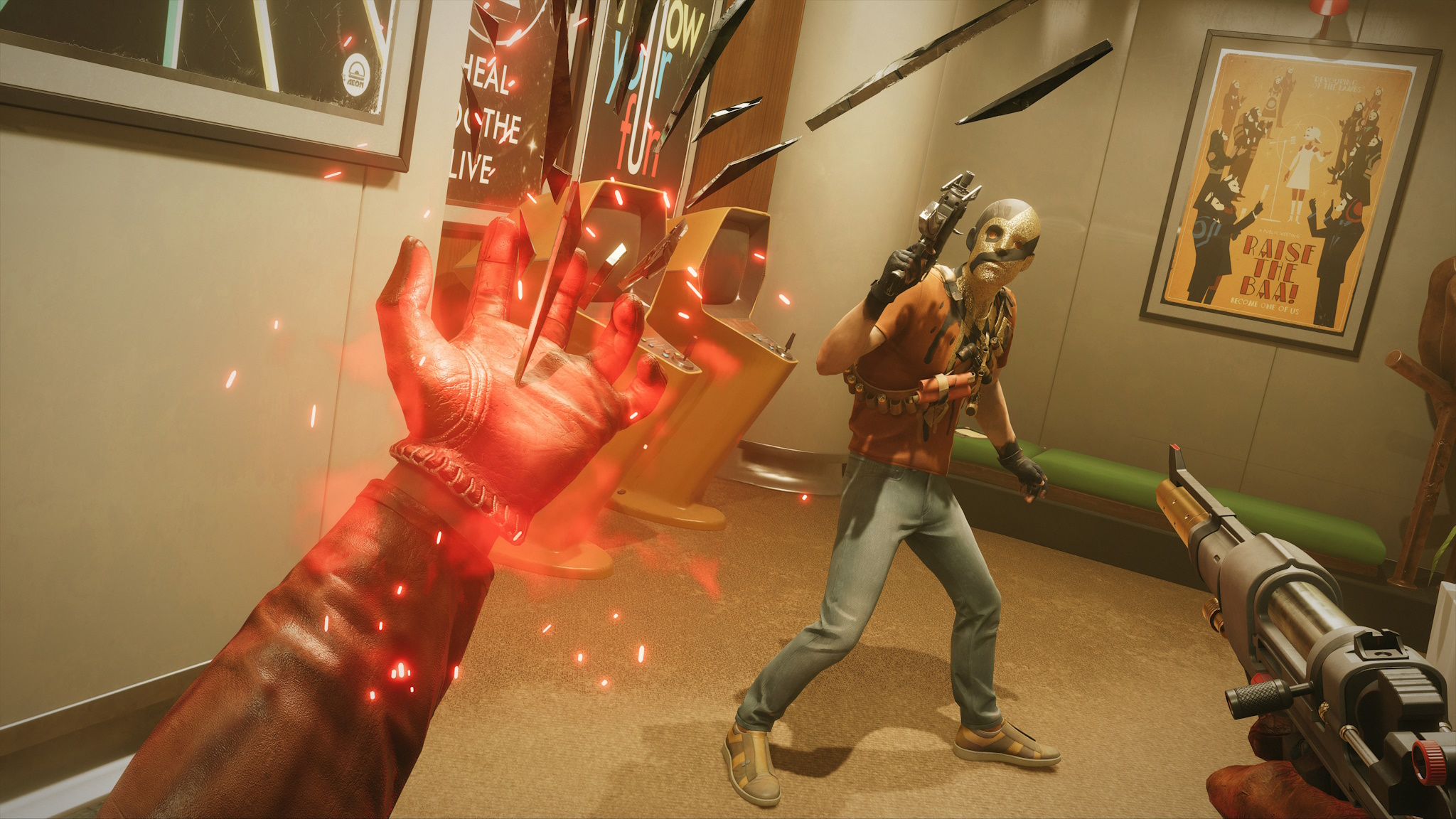
Deathloop can be completed in about 15 hours without too much difficulty, but like all great games, it begs for a replay from the moment the credits roll. Sure, you might have achieved a perfect day, but it was probably a messy perfect day, one in which you made lots of mistakes and often blundered your way to victory. Furthermore, the game possesses unexpectedly dense layers of
optional secrets. Dig deeply enough during Colt’s journey and you’ll discover unique legendary weapons, bizarre scripted events, amusing side stories, and delightfully pointless diversions. There’s a convoluted package delivery system to move key objects between areas, but you never need to unlock it. There’s a rock concert you can sabotage, resulting in the performers asphyxiating
to death on stage. There’s a trivia game about Blackreef itself that gives no meaningful in-game reward, even if you complete it perfectly. And then there are those locked bunker doors that you
(probably) never managed to open on your first play-through. What was that about? I haven’t even mentioned the game’s optional online multiplayer mode, in which players slip into Julianna’s role and hunt down another player’s Colt. (Some Deathloop fans would likely say that this is where the real game lies.)
Vitally, these optional elements never feel like game-padding busywork designed to provoke the compulsive itch of the habitual completionist. They feel like genuine discoveries, which is an all-too-
rare sensation in video games these days. It’s a feeling that The Legend of Zelda: Breath of the Wild (2017) strove for, but couldn’t always maintain, due to that game’s enormous scale and often
frustrating mechanics. Deathloop succeeds because of its exquisite balance and durability. Its world is impressively large and detailed, but not paralyzingly massive. Its systems are high-concept yet straightforward, while still encouraging creative problem solving. Its gameplay doesn’t exhaust, but entices, silently urging the player to try one more loop. This time, it hints, things will be different.
Deathloop is now available for the PC and Playstation 5.
